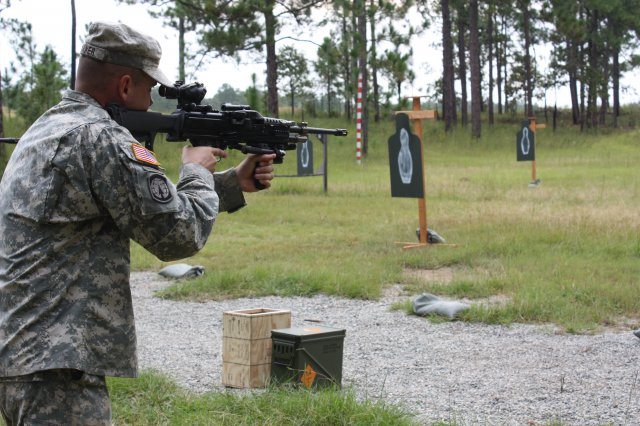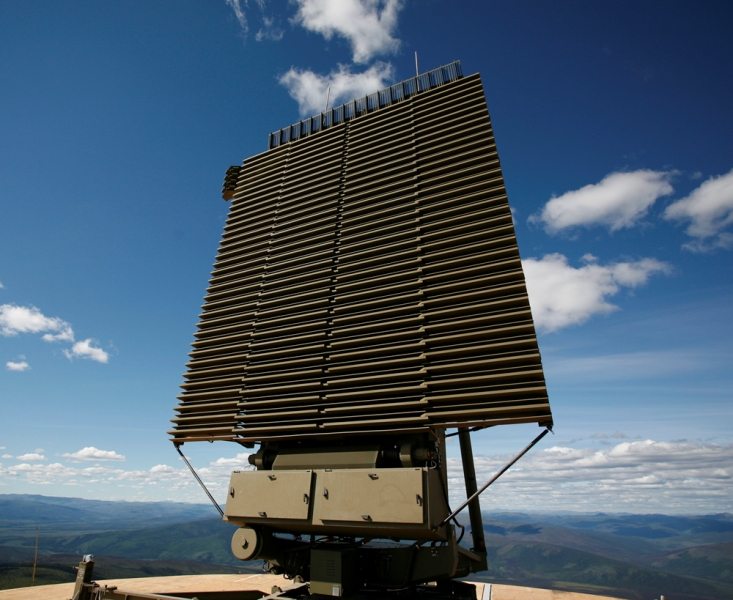Nearly 20 Soldiers participated in a two-week assessment of a prototype light machine gun to demonstrate its potential impact on mission effectiveness and to help engineers develop possible improvements to the weapon and its unique ammunition.
The evaluation sought the warfighter’s perspective after enduring a series of strenuous combat performance drills with the weapon.
It had taken six years to get from a concept to a fully functioning weapon that was ready for evaluation, but Kori Phillips, a project management engineer in the Joint Service Small Arms Program, or JSSAP, said it was well worth the wait.
“This is exactly what we have been waiting for,” said Phillips. “This is what we need to move forward.”
The Soldiers’ feedback will be used to influence the user community to develop a Capability Development Document. A CDD is required before the system can transition to a program of record and enter the Engineering and Manufacturing Development phase of the acquisition life cycle.
This would be the next step needed for the program to move forward toward an eventual fielding of the weapon to Soldiers in the field.
The light machine gun is part of the Lightweight Small Arms Technologies, or LSAT, program, which is managed by the JSSAP, part of the Army’s Armament Research, Development and Engineering Center, or ARDEC, at Picatinny Arsenal, N.J.
The LMG is a gas-operated, cased telescoped light machine gun. It is air-cooled and belt fed with selectable semi-automatic and fully automatic fire and fires from the open-bolt position. Its rate of fire is approximately 650 rounds per minute.
The JSSAP team hopes that the LMG will eventually replace the M249 Squad Automatic Weapon, knows as a SAW, as the standard issue machine gun used by Soldiers in combat zones.
GETTING TO KNOW THE WEAPON
The machine guns and their operators were tested through automatic rifleman tasks and operational scenarios.
The purpose was to assess how the lighter machine gun affects the Soldiers’ ability to effectively engage targets from various firing positions after completing tasks that induced physical stress and an elevated heart rate.
The weapons were also evaluated on their suitability regarding portability, safety, compatibility with Soldier equipment, durability in challenging environments, ease of use, and impact on Soldier mobility.
“We ran Soldiers through with both weapon systems and timed them to look at how much faster they could complete the course with the lighter weapon and to gain subjective feedback on mobility and portability issues while they negotiated the obstacles,” said Maj. Matthew Bowler, a military advisor to the small arms program.
Immediately after each event, the Soldiers filled out surveys where they offered opinions about how they felt physically, and any issues or malfunctions they experienced with either weapon or its ammunition. They could also include any positive feedback.
On the first day of the second week, the Soldiers marched six miles in full combat gear, including body armor, a 50-pound rucksack and a basic load of ammunition for their respective weapons. Half the Soldiers carried the SAW and the other half carried the LMG.
After the road march, the Soldiers immediately started firing their weapons to measure the effects of muscle fatigue and stress while firing.
Sgt. Brandon Vega, an infantryman with the 2/29 Infantry Battalion, saw an increase in his accuracy when firing the LSAT after the march compared to the SAW.
“The first six round bursts were within the size of a quarter,” Vega said. “Then I got three on top of one so I was real impressed with that.”
Vega added that, using the SAW, he has yet to achieve the same level of accuracy.
According to a study conducted in 2005, the average fighting load for the SAW gunner is 79 pounds. That is nearly twice the weight a Soldier should carry, according to Army doctrine.
“The Soldier carries too much weight so anything we can do to reduce Soldier load increases the Soldier’s effectiveness, his capability on the battlefield and his survivability,” said Bowler.
The weight reduction provided by the LMG would have a significant effect on the SAW gunner, the most heavily burdened Soldier in the squad.
With a basic load of 1,000 rounds, the light machine gun and its cased telescoped ammunition is 20.4 pounds lighter than a traditional SAW with the same amount of standard, brass-cased ammunition.
During the assessment, more than 25,000 rounds were fired from eight prototype LMGs.
The suggested rate of fire for machine guns is three to five round bursts whenever possible, eight to ten round bursts at the most. This gives the gunner time to readjust his aim and helps keep the barrel from overheating as quickly.
A high rate of fire increases the possibility of a “cook off.” Cook off occurs when the propellant is unintentionally ignited by the heat in the weapon chamber, firing a round unexpectedly and causing a significant safety hazard.
Because of the design of the chamber, the LMG is very unlikely to experience a cook off, Phillips said. Technical tests showed that more than 250 rounds could be fired without a risk of cook off. The M249 SAW has been known to cook off at 220 rounds under certain circumstances.
OTHER ASSESSMENTS
In another assessment of shooting while under physical stress, Soldiers wore body armor and sprinted 200 yards with their weapons and a basic load of ammunition, then rapidly engaged close-range targets from the standing position. Again, they performed this task with both weapons. Many Soldiers saw an improvement in their overall time with the lighter weapon.
“Today we ran with the LSAT and with the SAW,” said Cpl. Nickolaus Hammack, one of the military police Soldiers participating in the assessment. “Both were pretty trying but the SAW hands down is way heavier. Especially going up a hill, you feel the weight on you. (The) LSAT is a lot lighter weapon. It really is a joy to have.”
The third week of assessment involved Soldiers of the 75th Ranger Regiment. They used two of the LMGs as part of a squad maneuver live-fire exercise to determine how the attributes of the new weapon system would impact squad effectiveness.
The exercise was conducted in an urban setting where the Soldiers used the weapon for suppressive fire and for room-clearing.
The Rangers said they liked the semi-auto feature that made the LMG a much more viable weapon for room-clearing than the SAW.
Additionally, one Ranger commented that the weight of the LMG as a system was “noticeably better” than that of the Mk 46 variant of the SAW that they currently use, because of the significantly lighter ammunition that dramatically increased his mobility while maneuvering as part of the squad.
FUTURE OF THE LIGHT MACHINE GUN
Overall, the Soldiers’ comments were positive and they overwhelmingly preferred the LMG to the SAW. They were impressed by the weapon’s light weight, decreased felt recoil, and related increase in accuracy and better control.
The Soldiers’ input could lead to design changes to any final product. However, no decision has been made on whether the LMG will eventually be fielded.
Spc. Brandon Smith, an infantryman, spent two weeks comparing the weapons.
“I could see a whole squad carrying it (the LMG),” he said. “You would own the battlefield.”
To view video of the assessment and prior videos on the LMG on the Picatinny Arsenal YouTube channel go to http://www.youtube.com/user/PicatinnyArsenal, or http://www.army.mil/article/67917/











